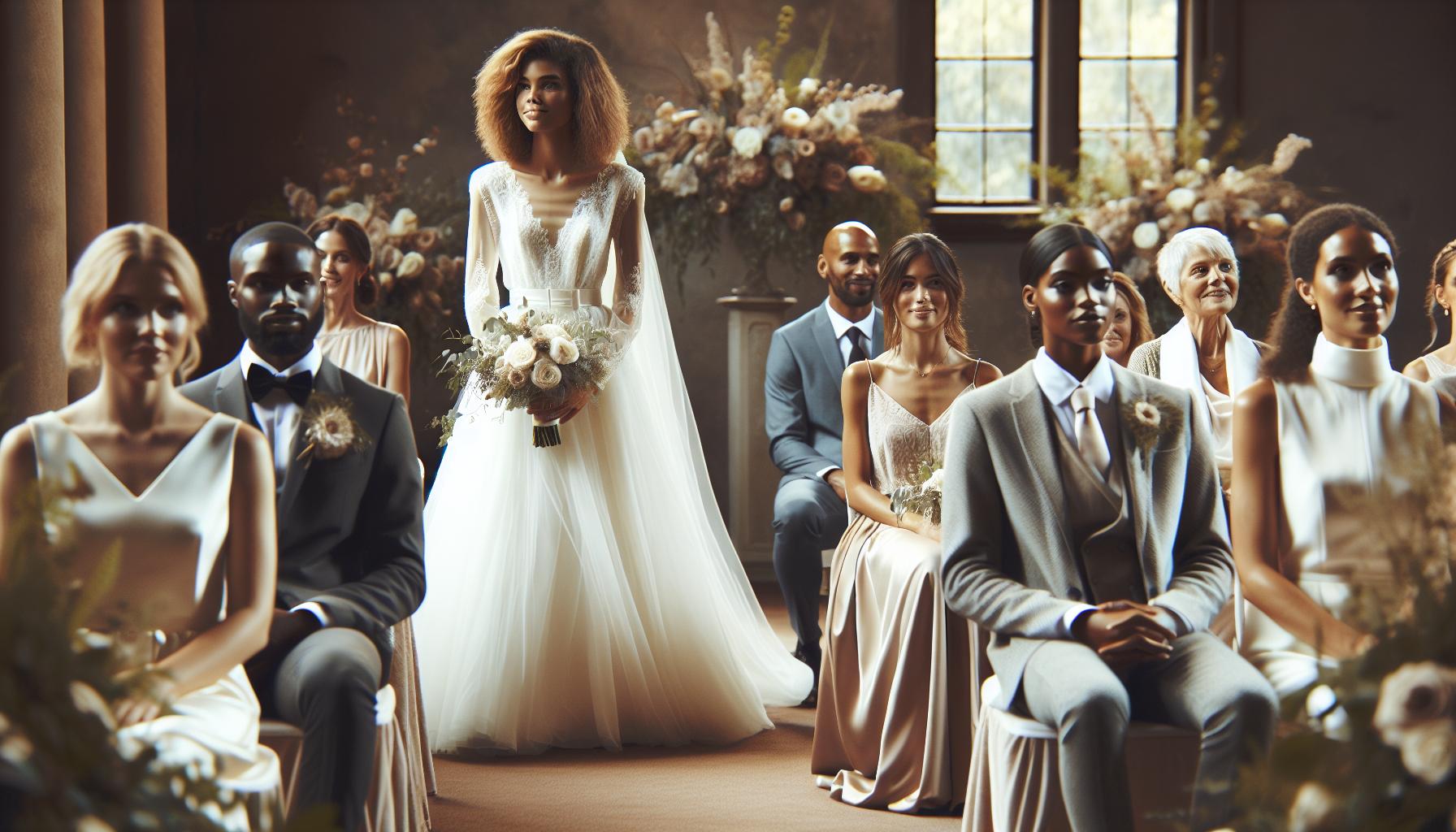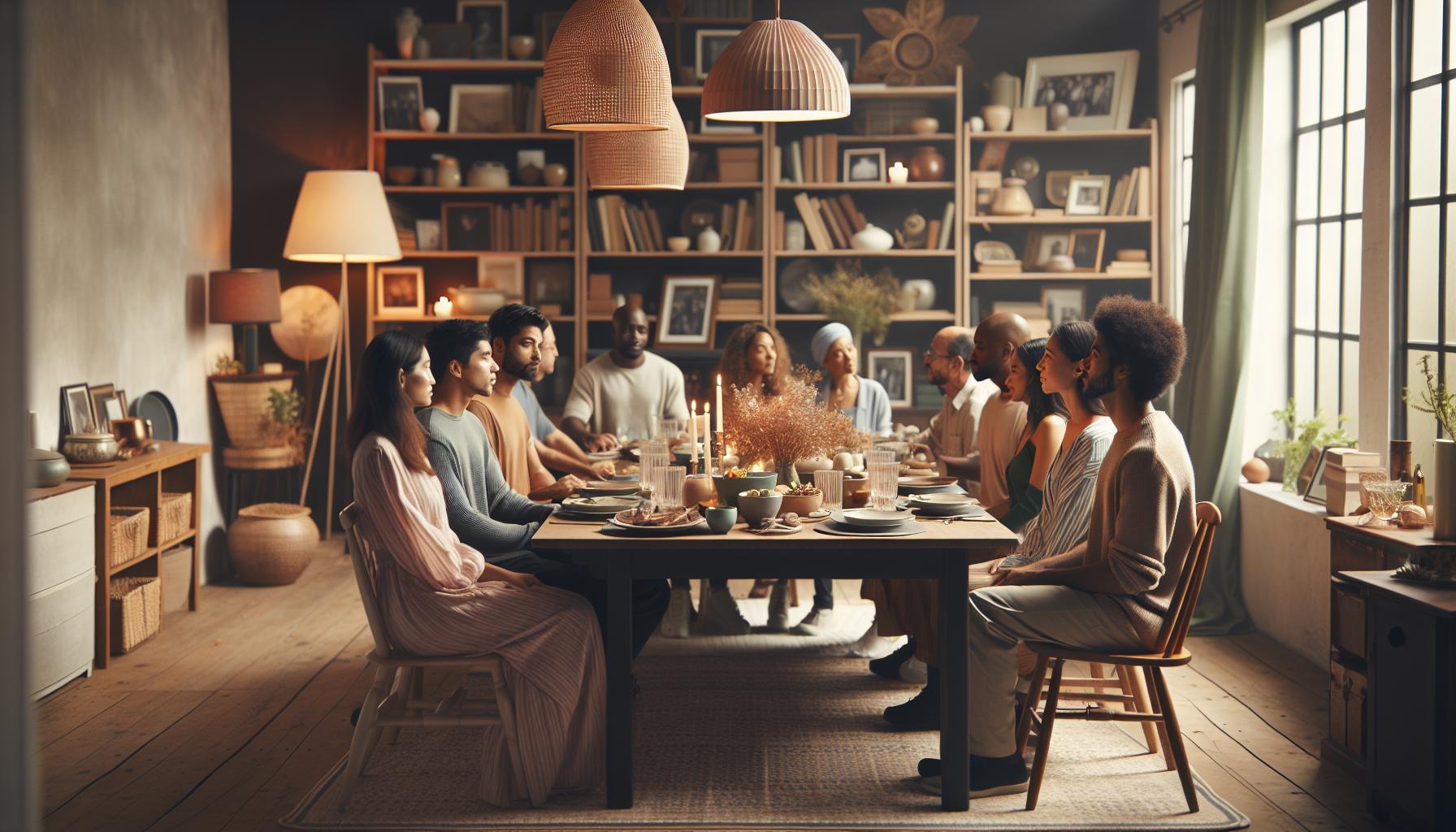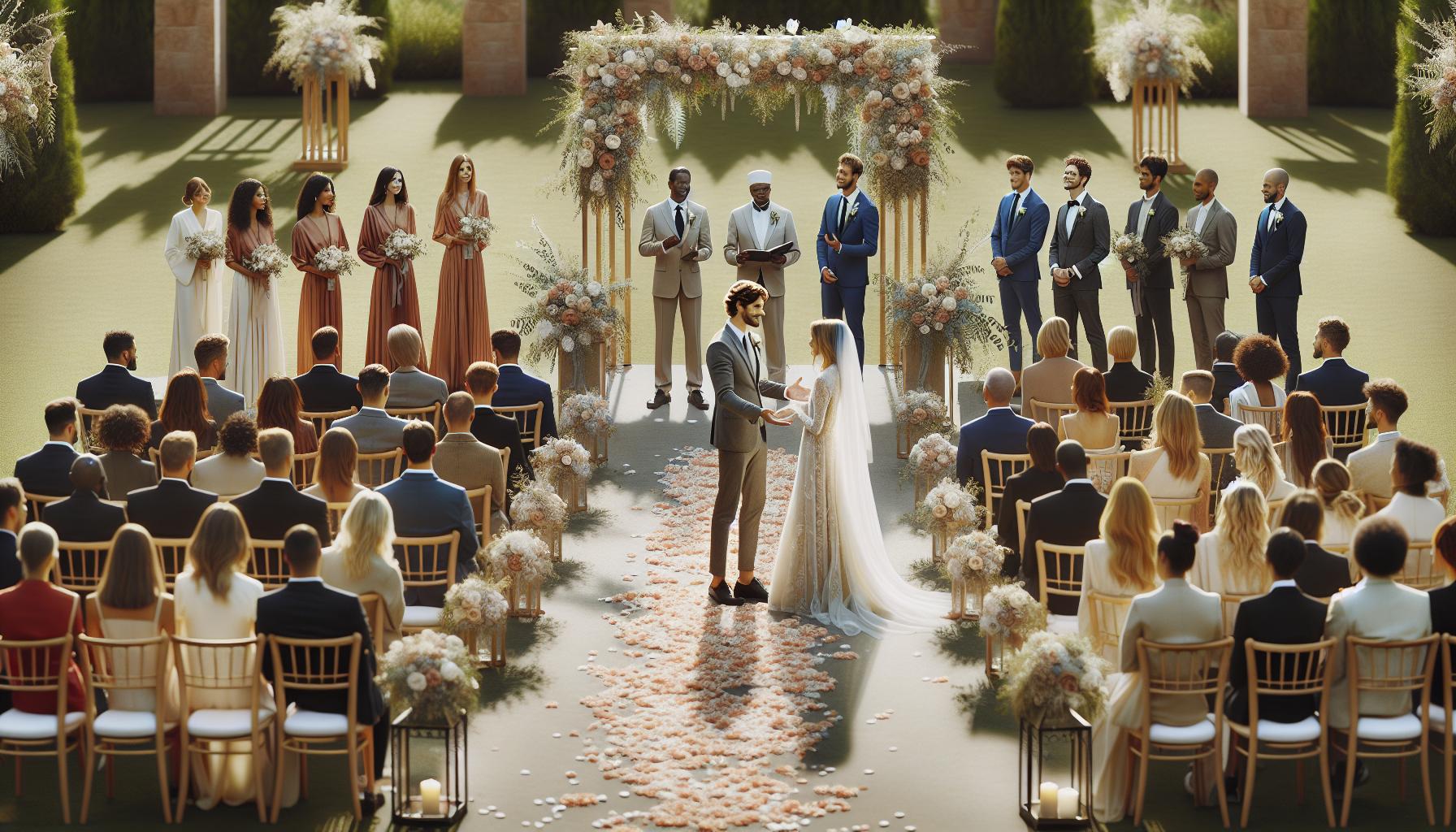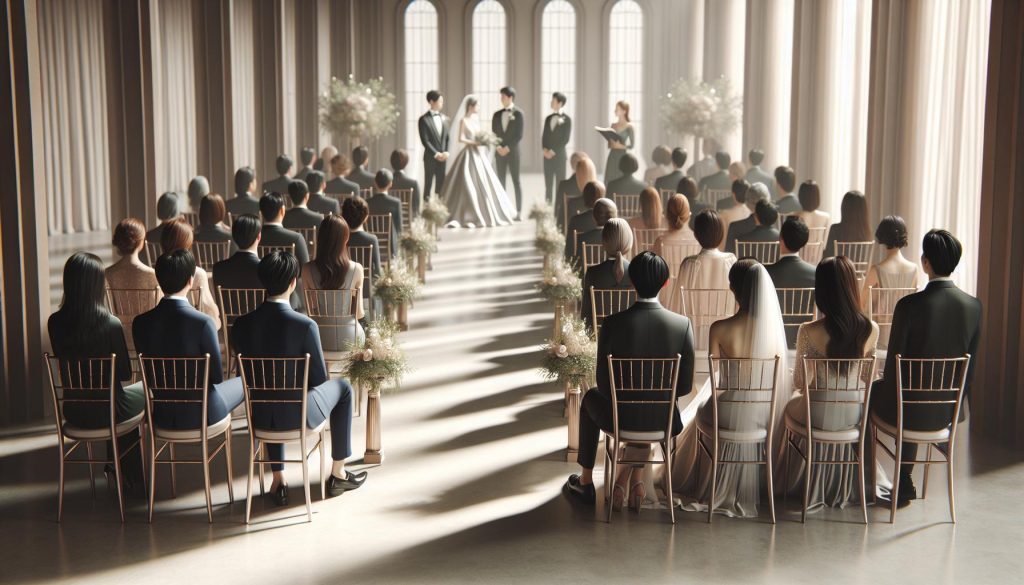When planning a wedding, every detail matters, including seating arrangements. Traditionally, the bride’s family sits on the left side of the ceremony space, a practice rooted in centuries of customs. Understanding these seating traditions not only honors family dynamics but also helps create a harmonious atmosphere for your special day. As couples navigate the complexities of wedding planning, knowing where to seat loved ones can alleviate stress and promote inclusivity. This exploration of seating traditions will help you make informed choices, ensuring that both families feel respected and cherished at your celebration. Whether you embrace traditional etiquette or wish to personalize your seating chart, this guide will illuminate the options available, making your wedding day as memorable as the love it celebrates.
What Does Tradition Say About Seating Arrangements?
The seating arrangement at a wedding is not merely a logistical decision but steeped in traditions designed to honor familial connections and relationships. Traditionally, the bride’s family sits on the left side of the aisle, while the groom’s family occupies the right side. This custom stems from old Western traditions, where the left side, being closer to the altar, was associated with the bride and her family, signifying their primary role in the marriage ceremony. Understanding these intricacies can help couples navigate their seating plans in a way that respects time-honored customs while accommodating their personal preferences.
In addition to the side they sit on, specific etiquette governs how families are arranged within these sections. Typically, immediate family members, such as parents and siblings, are given prominence, seated in the front rows. Extended family and friends may follow, creating a sense of hierarchy that reflects the closeness of relationships. For instance, the parents of the couple are usually seated in the first row, with grandparents close behind. This arrangement helps streamline the emotional connections felt during the ceremony while providing a clear guide for guests on where to sit.
However, it’s essential to acknowledge that not all couples follow traditional seating arrangements. Many choose to create a blend of traditions or personalized seating plans that reflect their unique families and backgrounds. Inclusivity is key; whether it’s by mixing families or using alternative designs like “family tables,” which allow for a more communal gathering feel, modern wedding planning embraces a variety of arrangements that celebrate the joy of union, regardless of tradition. By thoughtfully considering these elements, you can create a wedding atmosphere that is heartfelt, inclusive, and deeply personal, ensuring that every guest feels valued on your special day.
Bridal Family Seating Etiquette Explained

Tradition holds that the bride’s family sits on the left side of the aisle during the wedding ceremony, a practice steeped in historical significance and familial representation. This placement is not merely arbitrary; it reflects the bride’s pivotal role in the union and honors her family’s contributions to the event. The left side, closest to the altar, symbolizes the bride’s prominence in this sacred moment, reinforcing the age-old custom that positions her family as a central pillar of the nuptial celebration.
Understanding the seating protocol goes beyond simple left-right placements; it delves into the nuances of family hierarchies and relationships. Immediate family members, such as parents, siblings, and often close relatives, should ideally occupy the front rows. This placement creates a visible outline of support and connection and acknowledges the emotional contributions of those intimately involved in the couple’s journey. Parents of the bride, for instance, are traditionally seated in the first row, with grandparents or other significant figures following closely behind, fostering a sense of continuity and intimacy during the ceremony.
In today’s diverse cultural landscape, it’s essential to embrace flexibility while honoring traditions. Many families now choose to adapt seating arrangements to reflect their unique dynamics. For example, a blended family might opt for mixed seating that allows relatives from both sides to share the same row, fostering unity and warmth. Alternatively, some couples may create a “family table” concept, where relatives from both families mingle, echoing a more communal feel that transcends traditional boundaries. This way, the seating arrangement becomes a joyful reflection of each family’s distinctive character, making it more inclusive and representative of the couple’s values.
Ultimately, effective communication about seating arrangements is crucial for ensuring everyone feels acknowledged and comfortable on this momentous day. Whether through personalized place cards or a clearly displayed seating chart, details enhance the overall experience and help guests navigate their designated spots with ease. By thoughtfully considering these elements, couples not only pay homage to tradition but also cultivate an atmosphere of love, acceptance, and celebration, making their wedding a memorable occasion for all attendees.
Groom’s Family: Where Do They Sit?

When it comes to seating arrangements at weddings, tradition plays a vital role in understanding where the groom’s family should sit during the ceremony. While the bride’s family is traditionally seated on the left side of the aisle, the groom’s family typically occupies the right side, a placement that symbolizes their significant presence as well. This positioning not only honors the groom’s family but also serves to create a balanced aesthetic during the ceremony, enhancing the visual harmony of the occasion.
Understanding the specific seating for the groom’s family involves a few nuanced considerations. It’s customary for the groom’s immediate family members, such as parents and siblings, to sit in the front rows, just as the bride’s family does. This arrangement ensures that both families are visibly represented and underscores their importance in supporting the couple on this momentous day. For instance, the groom’s parents would sit in the first row on the right, often accompanied by siblings, with grandparents following closely behind. This setup conveys a sense of unity and communal joy, showcasing the intertwining of the two families as they celebrate the couple’s union.
In modern wedding practices, couples may choose to adapt traditional seating arrangements to better reflect their unique family dynamics. Blended families, for example, might decide to intermingle relatives from both sides within the same rows or even create a mixed seating plan that encourages interaction. This can foster a supportive atmosphere and signify the coming together of different familial backgrounds, creating a more inclusive environment for all guests. Couples are encouraged to communicate openly with both families about their preferences, ensuring that attendees feel acknowledged and valued in their roles on this special day.
Regardless of how the seating is ultimately arranged, the emphasis should be on making everyone feel cherished. Using thoughtful touches like personalized place cards or clearly marked seating charts can help guests find their designated spots and feel more at ease. Ultimately, the placement of the groom’s family, alongside the bride’s, helps build the foundation for a joyous celebration, symbolizing the love and support surrounding the couple as they embark on their married life together.
Blending Families: Tips for Inclusive Seating

In the beautiful journey of uniting two families through marriage, creating an inclusive and harmonious seating plan is vital, especially when blending families. A thoughtfully crafted seating arrangement can set the tone for connection, support, and joy among guests, ensuring that everyone feels embraced in the celebration of love. While wedding traditions often allocate specific sides of the aisle for the bride’s and groom’s families, couples today are inspired to reflect their unique family dynamics within this structure.
To foster inclusivity, consider mixing relatives from both families in shared rows rather than strictly adhering to traditional left-right separation. This approach encourages conversation and interaction among family members who may not know each other well, allowing them to bond over shared experiences and the joyous occasion. For instance, placing the bride’s cousins next to the groom’s aunts can spark delightful conversations and create new connections.
Another effective strategy is to designate special seating for blended families, such as creating “family zones” where members from both sides can sit together. This visual representation of unity not only honors the relationships each person has with both families but also enhances the overall celebratory atmosphere. Additionally, using personalized name cards or unique table numbers that reflect both families can add a heartwarming touch, making everyone feel acknowledged.
As you plan your inclusive seating arrangement, keep communication open with both families. Discussing preferences and possible seating strategies will foster understanding and cooperation, allowing both families to express their feelings about the arrangements. Inviting input can also help mitigate any potential tensions and ensure that everyone plays a role in this joyous occasion. Remember, the goal is to cultivate an environment where love and support flourish, celebrating the merging of two families into one new chapter.
Understanding the Wedding Ceremony Layout

Understanding the layout of your wedding ceremony is essential for ensuring that the atmosphere feels welcoming and organized. Traditionally, the bride’s family sits on the left side of the ceremony space, while the groom’s family occupies the right. This division stems from age-old customs, symbolizing the unification of two families and the beginning of a new life together. However, it’s important to remember that these traditions can be adapted to reflect your unique circumstances.
In designing the ceremony layout, consider the following aspects that can enhance both the aesthetics and functionality of your space:
Key Aspects of Ceremony Layout
- Processional Path: The path where the bridal party walks in not only adds drama but also influences seating arrangements. Ensure that the chairs or pews do not block this pathway, allowing for a clear view of the couple as they exchange vows.
- Aisle Space: A wider aisle can create a grander entrance for the bride and enhance the overall experience. Ensure your seating arrangement accommodates this while allowing guests ample room to enter or exit their seats unobtrusively.
- Seating Visibility: It’s vital that all seats have a good view of the ceremony. Consider using rows that are slightly curved or angled rather than straight lines, ensuring everyone can easily witness the exchange of vows.
- Special Zones: If you have elderly relatives or guests with mobility issues, consider designating seats closer to the front or in a special area that makes it easy for them to access the ceremony space.
When it comes to blending families, think creatively about how to represent both sides. Couples who wish to depart from tradition might opt for a more mingled arrangement. For example, interspersing family members from both sides can foster a sense of unity right from the start. This method not only encourages conversation but also helps guests feel more connected to one another, particularly during a moment that celebrates togetherness.
Always remember that the primary goal of seating and layout decisions is to cultivate an atmosphere filled with warmth and love. Today’s weddings are about personal expression, and adapting traditional practices can honor both families while enhancing the joyous experience. By thoughtfully considering your ceremony layout, you can create a memorable celebration where everyone feels cherished, connected, and included.
Navigating Cultural Variations in Seating
In the diverse tapestry of wedding traditions, seating arrangements hold significant meaning, reflecting cultural nuances and family dynamics. While many Western ceremonies adhere to the tradition of having the bride’s family seated on the left and the groom’s on the right, this practice varies widely across cultures. Understanding these variations can be both enlightening and essential in planning a wedding that honors the couple’s backgrounds and beliefs.
In some cultures, the seating arrangement symbolizes unity and the merging of families in unique ways. For instance, in a traditional Jewish wedding, the seats are often arranged with an understanding that both families come together as one. The bride and her family may still traditionally sit to one side, but the focus shifts to ensuring that all family members, regardless of their background, can interact and engage throughout the ceremony. This approach encourages a sense of community rather than division, allowing families to bond during the wedding celebration.
In contrast, certain Eastern cultures, such as many Middle Eastern or South Asian traditions, can adopt entirely different seating configurations. The seating may alternate members of each family as a way to foster connections among guests. Often, ties are strengthened through shared experiences gathered around the ceremony’s significance. Some couples even embrace the concept of “VIP” seating for close family and friends, ensuring that everyone playing a crucial role in their lives feels acknowledged and cherished.
To create an inclusive atmosphere, consider inviting family members to participate in decisions regarding seating arrangements. Engaging loved ones in these discussions not only respects cultural norms but also allows everyone to contribute to this joyous occasion. Ultimately, can transform a traditional ceremony into a beautiful representation of shared values and connections, enriching the wedding experience for all involved.
Creative Alternatives to Traditional Seating Charts
Embracing creativity in seating arrangements can transform the wedding experience, allowing for personalized touches that reflect the couple’s unique story and relationships. Instead of adhering strictly to traditional layouts, couples can explore various inventive approaches that encourage interaction, celebrate diversity, and create memorable moments throughout the event.
One fun and engaging alternative is the themed seating chart, where each table represents a significant place or moment in the couple’s journey together. For example, tables can be named after places they’ve traveled, memorable dates, or their favorite movies. This allows guests to connect with the couple’s history while providing a conversation starter during the reception. To further enhance the experience, couples can include personalized table signs with anecdotes or photos related to each theme, making the seating chart not just functional but also a decorative piece.
Another creative approach is the “family-style” or communal table setup, which breaks the mold of traditional seating arrangements. Instead of separating the bride’s and groom’s families, a long table can be arranged where everyone sits together. This configuration fosters conversation and camaraderie, making it easier for guests to mingle and bond. It’s especially effective for smaller weddings where intimacy and connection are paramount.
In addition to themed tables and communal seating, consider incorporating interactive elements into the seating arrangement. For example, a map seating chart can visually display where each guest is seated. Guests can find their names on the map, which also suggests their table at the reception. This not only adds a decorative layer to the seating plan but also encourages guests to explore the venue and interact with fellow attendees as they navigate to their designated tables.
To ensure every guest feels valued, especially in blended families or diverse cultural backgrounds, mixed seating arrangements can be adopted. Alternating guests from both families or grouping friends and family with shared interests can spark new friendships and promote a comfortable atmosphere. This inclusive strategy respects family dynamics while highlighting the unity the wedding represents.
Ultimately, thinking outside the box with seating arrangements not only enhances the visual appeal of the venue but also enriches the overall wedding experience for the couple and their guests. By prioritizing interaction and connection over tradition, couples can create a celebration that resonates on a personal level, making their wedding day even more unforgettable.
The Role of the Wedding Party in Seating
Creating an inviting and harmonious atmosphere during the wedding is crucial, and the seating arrangement for the wedding party plays a significant role in setting the tone for the celebration. Traditionally, the bride’s family sits on the left side, while the groom’s family occupies the right. This historical preference stems from longstanding customs but adapting it to honor the unique dynamics of the wedding party can elevate the experience for everyone involved.
The wedding party not only lends support to the couple but also serves as a bridge connecting the two families and their friends. Here are a few key considerations regarding arrangements:
Inclusion and Representation
- Bridesmaids and Groomsmen: Often, bridesmaids sit with the bride’s family, while groomsmen sit with the groom’s family. However, mixing the seating or placing them at a family-style table can promote a sense of unity and camaraderie, breaking down barriers between the two families.
- Special Roles: If certain wedding party members have unique relationships with both families, consider seating them at tables that reflect those connections. This could mean placing a groomsman who has known the bride for years near her family or vice versa, making everyone feel included and valued.
Facilitating Interaction
The wedding party is vital in creating a fun and engaging environment during the ceremony and reception. Involving them in the seating strategy can encourage guests to mingle and interact with each other.
- Table Assignments: When planning the seating chart, consider assigning table placements based on shared interests or common connections. For instance, seat the bridal party near relatives or friends who they might not know well but would enjoy connecting over shared experiences or topics.
- Seating Arrangements: Creative seating arrangements, such as long communal tables, can help the wedding party foster relationships with guests, making it easy for them to act as hosts throughout the event.
In essence, how the wedding party is seated can significantly affect the overall atmosphere of the day. Couples should take care to think beyond traditional roles and consider how seating can reflect relationships, foster connections, and ensure everyone feels warmly embraced during these special moments. By thoughtfully arranging the seats, couples can enhance their wedding celebration, creating a joyous environment filled with love and laughter.
How to Communicate Seating Plans Effectively
Communicating the seating plan at a wedding can feel like navigating a complex puzzle, but it becomes a delightful experience when done thoughtfully and clearly. This significant aspect ensures all guests feel welcomed, recognized, and connected. Begin by crafting a detailed seating chart that visually represents the layout of the ceremony and reception. Utilize online tools or applications that simplify this process, allowing you to drag and drop names as you organize who sits where. Having a digital or printed chart that is easy to understand makes it a breeze for your guests to locate their designated seats.
To further enhance clarity, consider sending out seating assignments with your invitations. A simple note indicating where guests will be seated – whether it be on the left with the bride’s family or the right with the groom’s – can tremendously help set expectations. For those who might be confused or uncertain about the custom of seating arrangement, provide a brief overview of your choices in your wedding program or on a dedicated website. This can ease any anxiety and allow guests to embrace the various family dynamics present.
Once the day arrives, displaying your seating chart prominently at the entrance can help guests find their seats effortlessly. Use creative signage or a large board that indicates where each family traditionally sits, perhaps even highlighting why those traditions matter to you. Reinforce this with dedicated ushers who can guide guests and offer personal assistance if needed. This connection enhances the celebratory atmosphere and helps everyone feel included in your special day.
Finally, remember to communicate openly with your families about the seating arrangements. Discussing any potential conflicts or adjustments prior to the wedding can prevent misunderstandings and ensure everyone is on the same page. Ultimately, a thoughtfully communicated seating plan not only reflects family traditions but also fosters an inclusive environment where love and celebration can flourish.
Addressing Common Seating Conflicts
Addressing the delicate issue of seating conflicts at weddings is essential for ensuring a harmonious celebration. Conflicts often arise due to differing family dynamics, old family grievances, or simply the challenge of merging two distinct family backgrounds. To manage these common disputes, proactive communication is key. Start by facilitating discussions between both families well in advance, allowing necessary adjustments to be made without leaving anyone feeling slighted.
When contemplating the layout, consider employing a family seating chart that honors traditional roles while allowing for flexibility. For instance, seating the bride’s family on the left and the groom’s on the right can be a great guideline, yet it’s important to remain open to exceptions-like when parents have remarried or certain family members have special relationships. A family tree-style seating arrangement can help minimize tension by visually representing connections and create a more inclusive environment.
It’s invaluable to encourage a few friendly gestures, such as inviting family members to suggest their seating preferences. Are there family members who may feel uncomfortable in traditional placements? Allowing them to self-select or express concerns fosters inclusion. Ultimately, this can alleviate tension and help you design a seating plan that promotes unity.
On the big day, having assigned ushers to help guide guests to their specific area can be a simple yet effective way to address and diffuse any tension in real-time. Their role can include gently redirecting guests who might mistakenly sit in less appropriate places, ensuring that everyone feels comfortable and knows they belong. Open and respectful communication paired with a thoughtful layout is vital to navigating seating conflicts, transforming potentially awkward moments into opportunities for connection and joy.
Tips for Personalizing Your Wedding Seating Plan
Personalizing your wedding seating plan can transform the atmosphere of your ceremony, enhancing the joy of the day. Each guest plays a unique role in your celebration, and thoughtfully considering their seating not only honors their presence but also respects family dynamics and relationships. Here are some strategies to make the seating chart reflect your love story while ensuring everyone feels valued and included.
Start with a visual representation of relationships and family ties. A family tree-style seating arrangement can be particularly effective. This approach allows you to map out connections and dynamics, which can help mitigate potential tensions or uncomfortable encounters. When planning, consider seating the bride’s family on the left and the groom’s family on the right as a classic starting point, but remain flexible. If certain family members have unique relationships-perhaps parents are remarried, or there are significant friendships or rivalries-adjust seating as needed to create a balanced atmosphere.
Encourage input from family members regarding their preferences. This gesture not only makes them feel involved but also adds a personal touch to the seating process. You could provide options for seating arrangements, allowing them to express any concerns about traditional placements. An inclusive approach demonstrates love and respect for each guest, transforming your seating chart into a collaborative effort that strengthens bonds.
On the day of your wedding, consider employing ushers or family members to help guests find their seats, guiding them with warmth and charm. This simple action can alleviate any awkwardness around seating choices. Additionally, consider adding a personal element to your seating chart, such as incorporating photographs or fun facts about guests. This not only sparks conversation but can make your seating plan a delightful surprise that connects guests and encourages mingling.
Through thoughtful personalization, your seating plan can enhance the overall experience, ensuring that both families come together in a harmonious and loving environment. Remember, the goal is to celebrate love, so take the opportunity to create a space filled with warmth, connection, and joy.
Finalizing and Confirming Guest Seating Arrangements
In the enchanting world of wedding planning, can feel both exhilarating and overwhelming. This final step is crucial as it sets the tone for connections and conversations that will bloom throughout the ceremony and celebration. To ensure a smooth process, begin by revisiting your initial seating chart. Take into account any last-minute changes in guest counts or commitments, and make adjustments accordingly.
Clear Communication is Key
One of the most effective ways to finalize seating arrangements is through clear communication with your guests. Once you have a finalized seating chart, consider sharing it ahead of time, particularly with those who may need special assistance or might have preferences regarding their seating. Sending a follow-up message a week before the wedding can reinforce your seating decisions and help alleviate any lingering questions.
Furthermore, on the day of your wedding, ensure that each guest is warmly welcomed as they arrive. Assign ushers or trusted family members to guide guests to their seats, providing a personal touch that makes everyone feel cherished. For a fun twist, you can design a creative seating chart display that incorporates your wedding theme. Perhaps consider using a beautifully decorated board or a framed table arrangement featuring small cards with guest names and their assigned tables, adding a memorable element that sparks joy right from the outset.
Addressing Last-Minute Changes
Inevitably, there may be changes or no-shows as the big day approaches. Prepare to adapt your seating plan to handle such updates gracefully. It’s wise to maintain a flexible mindset when it comes to seating dynamics, especially in merging families or addressing any potential conflicts. A good practice is to have a few extra chairs available and a reserved seating area for VIP family members, allowing you to manage unexpected situations smoothly.
In the charming chaos of love and celebration, remember that the ultimate goal of seating arrangements is to create an atmosphere where all guests feel valued and at home. Use this opportunity to forge connections and celebrate the coming together of families and friends. By thoughtfully finalizing and confirming your seating arrangements, you set the stage for laughter, shared stories, and unforgettable moments, making your wedding a true reflection of your love story.
FAQ
Q: What side of the aisle does the bride’s family sit on during a wedding?
A: Traditionally, the bride’s family sits on the left side of the aisle during the wedding ceremony. This custom stems from older traditions where families were seated according to the bride and groom’s later union. For personalized seating, consider blending families to reflect modern dynamics.
Q: Why is it important to consider tradition when planning wedding seating?
A: Considering tradition when planning wedding seating helps honor family expectations and creates a familiar atmosphere for guests. It can also guide couples in making decisions that respect cultural norms, especially when families come from diverse backgrounds. Discover more about cultural variations in seating in the article.
Q: How can blended families be accommodated in wedding seating plans?
A: To accommodate blended families in wedding seating, consider creating a mixed seating area where both families can sit together. Incorporate personal elements into the seating chart, ensuring everyone feels included and valued. This topic is discussed further in the blending families section of our article.
Q: Where should the wedding party be seated during the ceremony?
A: The wedding party, including bridesmaids and groomsmen, typically sits at the front of the ceremony space. This position emphasizes their supportive role while allowing them to participate actively in the wedding events. Refer to the article’s section on the wedding party for more details.
Q: What should I do if there’s a seating conflict between families?
A: If there’s a seating conflict between families, communicate openly and address concerns early in the planning process. Consider creating separate sections for each family and have designated guests to help manage seating. More tips on resolving seating conflicts are available in our article.
Q: How can I customize my wedding seating chart?
A: Customize your wedding seating chart by incorporating personal touches like family names, memorable quotes, or photos. Using a creative theme that resonates with your love story will add a unique flair to the event. For more personalization tips, refer to our article on wedding seating plans.
Q: When should we finalize our wedding seating arrangements?
A: It’s best to finalize wedding seating arrangements about one month before the wedding day. This timeline allows for any last-minute changes and ensures that guests and families are accommodated appropriately. Check out the article for practical steps on confirming seating arrangements.
Q: How can cultural traditions impact wedding seating arrangements?
A: Cultural traditions can significantly impact wedding seating arrangements, often dictating who sits where based on customs. Recognizing these traditions shows respect and appreciation for family heritage, fostering a more inclusive event. Explore the cultural variations section in our article for in-depth insights.
Wrapping Up
Understanding wedding seating traditions, especially regarding where the bride’s family should sit, is essential for a smooth ceremony. This guide has illuminated key elements to help you navigate these age-old customs, ensuring your wedding day radiates love and harmony. As you finalize your seating arrangements, remember that everyone’s comfort and enjoyment matter, making this choice even more significant.
Now that you’re equipped with knowledge about seating etiquette, dive deeper into wedding planning by exploring our resources on wedding invitation etiquette and the significance of wedding traditions. Whether it’s your first step in planning or those final touches, our comprehensive tools and tips will ensure your journey is nothing short of extraordinary. Don’t hesitate-your dream wedding awaits! Share your insights or questions in the comments below; your experiences might just inspire someone else on their wedding journey.











